Driving a large vehicle means constantly worrying about what you can't see. That nagging uncertainty before every lane change can be exhausting. The right technology can transform that stress into confidence.
The best systems in 2025 use 77GHz millimeter-wave radar, which offers superior object resolution and all-weather reliability. They combine this with advanced signal processing for features like Lane Change Assist (LCA) and intelligent alerts that prevent false alarms, ensuring maximum safety for large vehicles.
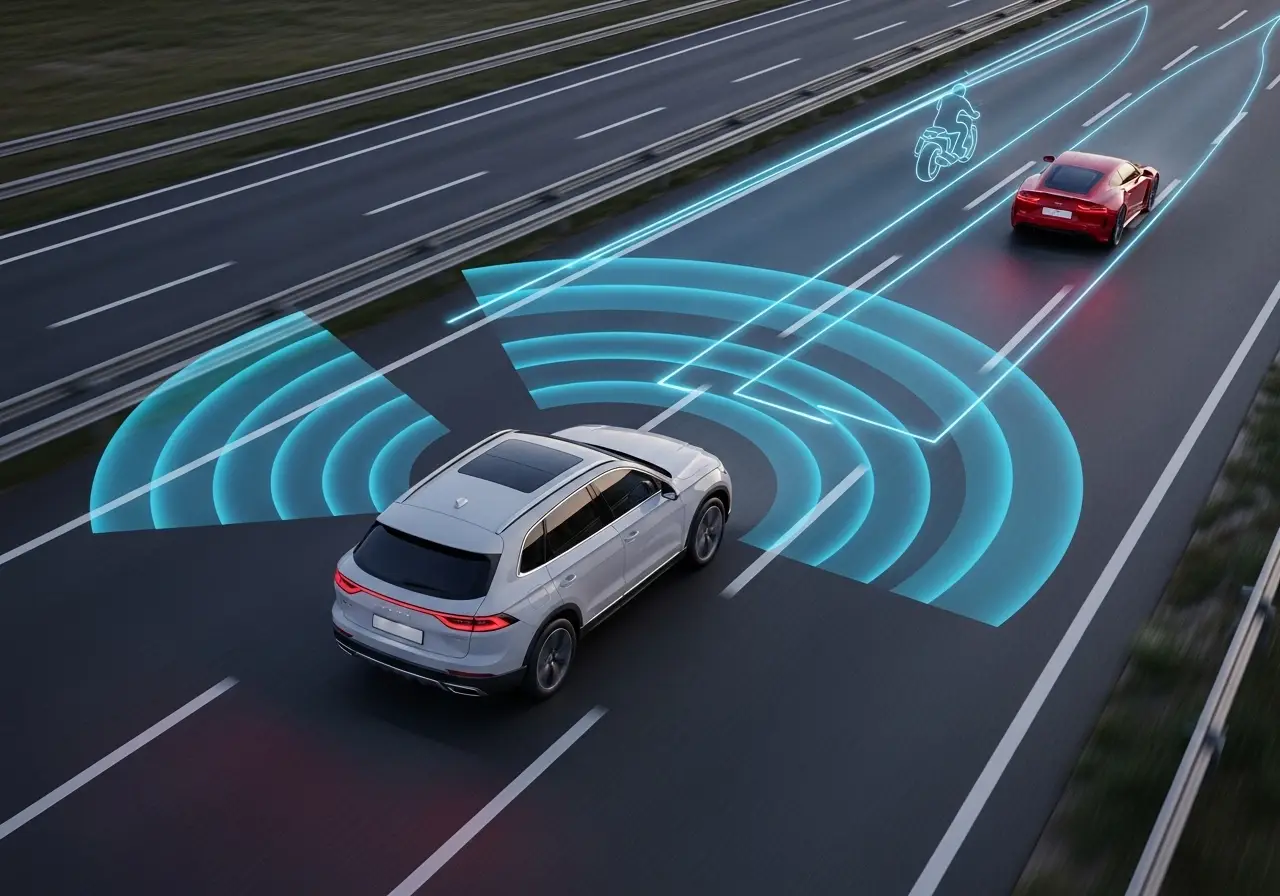
As the founder of VST Tech, I've spent my career pushing the boundaries of what's possible in automotive safety. We don't just sell products; we solve complex engineering problems. The difference between a basic blind spot monitor and a truly great one isn't in the marketing brochure—it's in the physics, the software algorithms, and the deep understanding of a vehicle's unique dynamics. Let's go beyond the surface and explore what really makes a system trustworthy when your safety is on the line.
Beyond the Hype: Why is 77GHz Radar Non-Negotiable?
The market is full of systems using different technologies like 24GHz radar, ultrasonic, or cameras. This creates confusion and doubt. How can you be sure you're choosing a system that won't fail in the exact conditions where you need it most?
77GHz millimeter-wave radar1 is non-negotiable because its physical properties provide unmatched accuracy and reliability. Its shorter wavelength allows for higher resolution to distinguish objects, and it easily penetrates rain, fog, and snow, where cameras and ultrasonic sensors become unreliable.
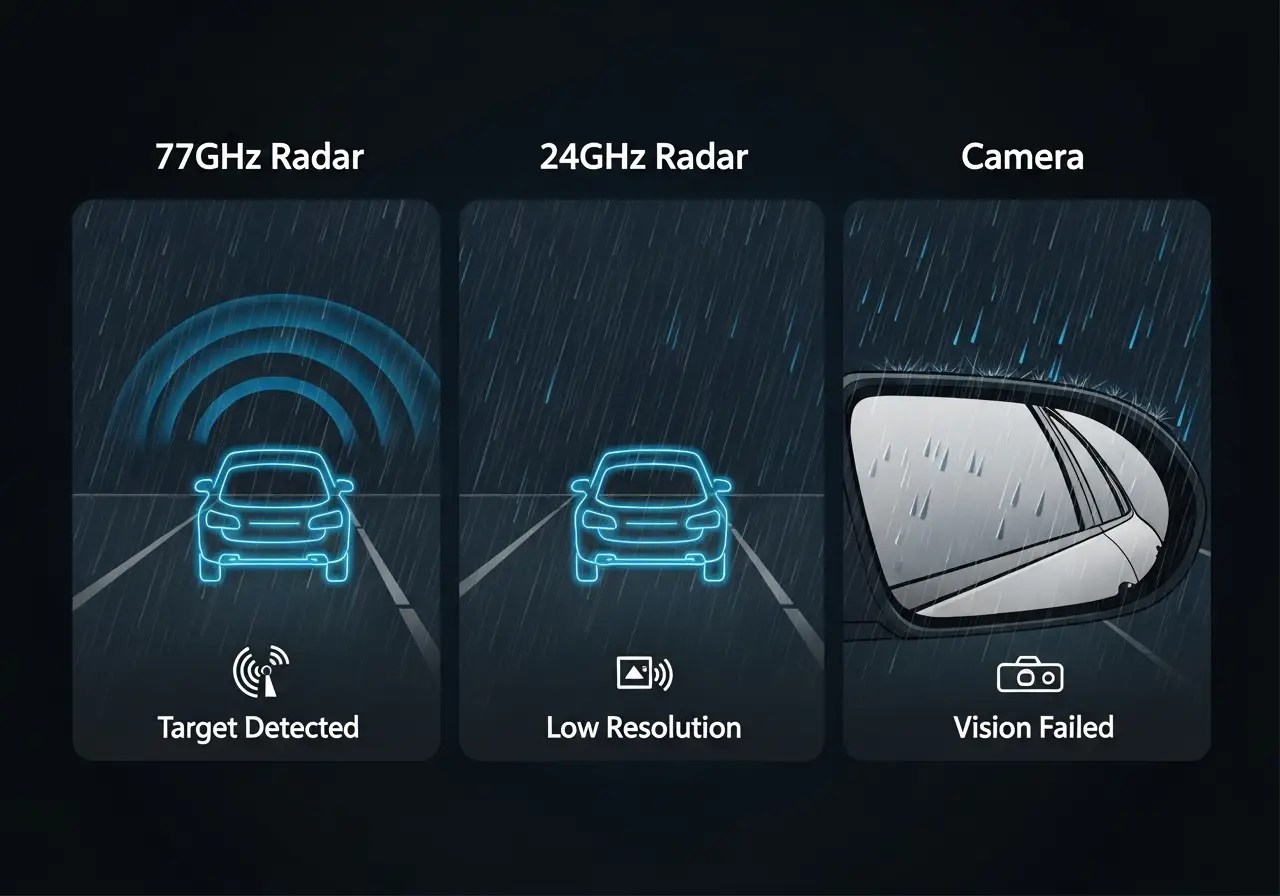
I remember a critical test we ran years ago on a foggy mountain road. We had a vehicle equipped with camera, ultrasonic, and radar systems side-by-side. The camera was useless, blinded by the dense fog. The ultrasonic system gave constant false alerts, triggered by the heavy moisture in the air. Only the millimeter-wave radar consistently and accurately tracked the other vehicles. This real-world experience is why we at VST Tech focus exclusively on this superior technology. It’s a decision based on physics, not cost.
The Physics of Perception: Wavelength and Data Quality
The core difference lies in how these systems "see" the world. This isn't just a minor technical detail; it's fundamental to the system's performance.
| Technology | Wavelength | Key Advantage | Key Disadvantage |
|---|---|---|---|
| 77GHz Radar | ~4 mm | High resolution, excellent weather penetration | Higher component cost |
| 24GHz Radar | ~12.5 mm | Good weather penetration | Lower resolution, can't separate close objects |
| Camera | ~400-700 nm | Can identify object color/type | Easily blinded by weather, glare, dark |
| Ultrasonic | N/A (Sound) | Very low cost | Very short range, poor in bad weather |
Why Data Quality is the Unseen Differentiator
A detection system is only as good as the data it collects. 77GHz radar excels here for two reasons. First, its high resolution creates a detailed "point cloud," allowing the system's brain to better distinguish between a motorcycle, a car, and a stationary guardrail. Older 24GHz systems might just see a single, blurry "blob." Second, it leverages the Doppler effect2 to measure the precise velocity of a target instantly. Camera systems have to estimate speed by comparing image frames, a process that is slower and less accurate, especially for vehicles approaching at high speed. This superior data quality is what enables advanced features and prevents the system from making critical mistakes.
What Defines a "True" SUV Blind Spot System?
You drive an SUV for safety and utility, but its height and length create hazardous blind spots. A basic, one-size-fits-all system won't cut it. You need a solution engineered for an SUV's specific geometry and driving dynamics.
A true SUV system features a multi-zone detection strategy, including a long-range Lane Change Assist (LCA) zone up to 70 meters. It must also have intelligent alert logic that distinguishes real threats from passive traffic and incorporates features like Door Open Warning (DOW).
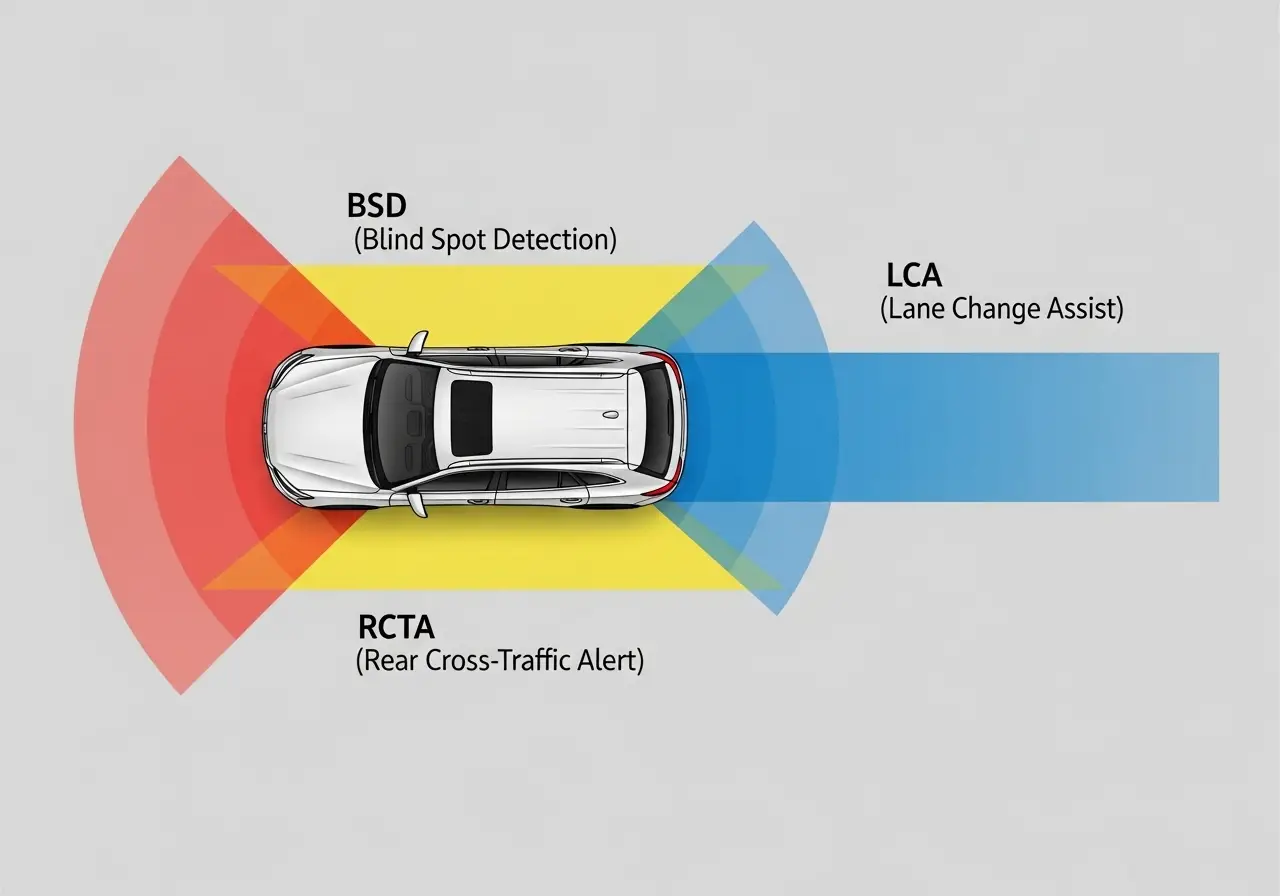
Early in my career, a common complaint we heard from SUV drivers was "alarm fatigue." Their systems would beep constantly in heavy traffic, to the point where they would start ignoring them. This is a critical design flaw. A safety system that gets ignored is worthless. We realized the solution wasn't just detection, but intelligent interpretation. The system needs to understand the context of the situation. It shouldn't just tell you a car is there; it should tell you if that car poses a threat to your intended maneuver.
Deconstructing the Intelligent Detection Zone
A top-tier system for an SUV doesn't just have one blind spot zone. It has multiple, overlapping zones, each with a specific purpose.
- Blind Spot Detection (BSD) Zone: This is the traditional zone, covering the area immediately adjacent to your vehicle, typically up to 10 meters back. Its job is to tell you if a car is currently hiding where you can't see it.
- Lane Change Assist (LCA) Zone: This is far more important for highway driving. It's a longer, narrower zone that can extend 50 to 70 meters back. It looks for vehicles approaching at high speed in the adjacent lanes. It answers the question, "Is it safe to start changing lanes?"
- Rear Cross-Traffic Alert (RCTA) Zone: This uses the sensors to look sideways when you're in reverse, detecting cars coming from the left or right in a parking lot.
The Logic Behind Smarter Alerts
The best systems use sensor data combined with your vehicle's actions to provide smarter, more relevant alerts. The core logic is: IF (object in BSD/LCA zone) AND (turn signal is active) THEN (trigger audible + flashing visual alert). This simple conditional logic dramatically reduces unnecessary beeping. Furthermore, advanced systems add features like Door Open Warning (DOW)3, which uses the same sensors to warn you if you're about to open your door into the path of an approaching car or cyclist—a crucial feature for city driving.
Why Are Commercial Van Systems a Different Engineering Challenge?
A commercial van is essentially a metal cavern on wheels with almost zero rearward visibility. The challenges they present go far beyond what a typical car or SUV system can handle. Applying a standard kit to a van is a recipe for failure.
Van-specific systems require robust, externally mounted IP69K-rated sensors, sophisticated software to create "ignore zones" for the van's own body, and direct CAN Bus integration4 to get reliable vehicle speed and signal data without interference.
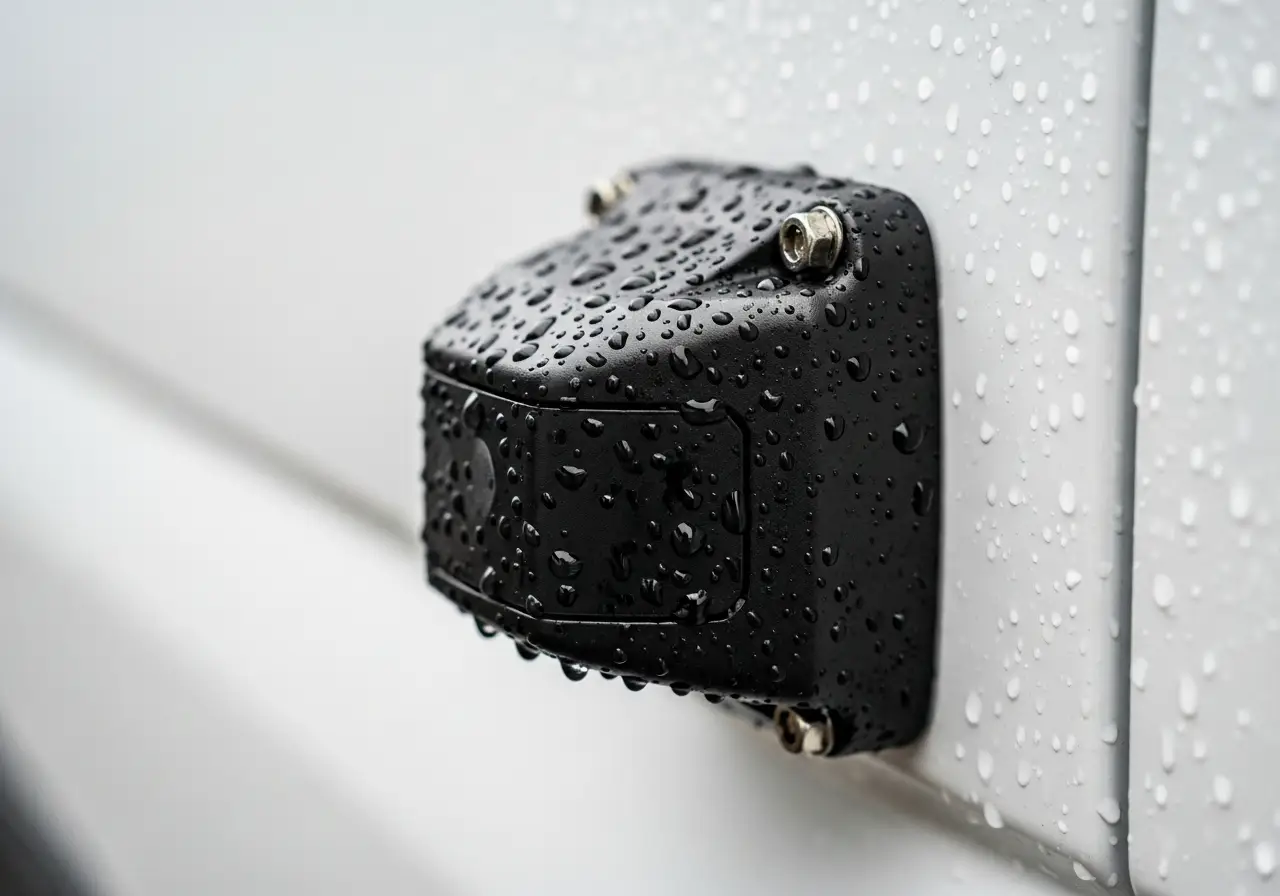
One of our first major fleet projects involved a fleet of long-wheelbase delivery vans. Our initial tests were a disaster. The sensors, mounted on the large, flat metal sides, were detecting the vehicle's own body panels and the rear wheels, causing constant false alerts. It forced us back to the drawing board. We had to develop entirely new mounting hardware and, more importantly, rewrite the firmware to create complex software "masks" that told the radar what to ignore. It taught me that for commercial vehicles, ruggedness5 and software intelligence are paramount.
The War Against False Positives
For a professional driver, a false positive is not just an annoyance; it's a dangerous distraction that erodes trust in the system. The main engineering challenge is managing signal reflection and interference.
- Intelligent Software Masking: The system's software must be calibrated to the van's exact dimensions. It creates a digital "ignore zone" so that any radar reflections coming from the vehicle's own bodywork or fixed equipment are completely disregarded. This requires precise, professional calibration.
- Vibration Dampening: Vans, especially when empty, produce high-frequency vibrations that can interfere with sensor accuracy. Commercial-grade systems use specialized mounting brackets with rubber dampeners to isolate the sensor from these vibrations, ensuring a stable and clear signal.
Uncompromising Durability and Data Integration
Commercial vans operate 8-12 hours a day in all conditions and are often cleaned with high-pressure washers. The hardware must be built to survive this abuse.
- IP69K Rating: While IP67 is waterproof, an IP69K rating means the sensor can withstand close-range, high-pressure, high-temperature water jets. This is the gold standard for any externally mounted electronic component on a work vehicle.
- CAN Bus Integration: The most reliable way to get vehicle data is by connecting directly to the Controller Area Network (CAN Bus). This provides pure digital signals for vehicle speed, turn signal status, and reverse gear. Systems that rely on manually tapping into analog wires are far more prone to installation errors and signal interference.
Can an Aftermarket System Genuinely Outperform a Factory-Installed One?
There's a common belief that factory-installed systems are inherently superior. However, the reality of automotive development cycles and business priorities often means this isn't the case. You might be surprised what a specialized aftermarket solution can offer.
Yes, a premium aftermarket system can outperform a factory one. Specialists aren't bound by long automotive design cycles, allowing them to use the very latest radar chips and software. They also offer superior calibration and customization that OEMs don't.
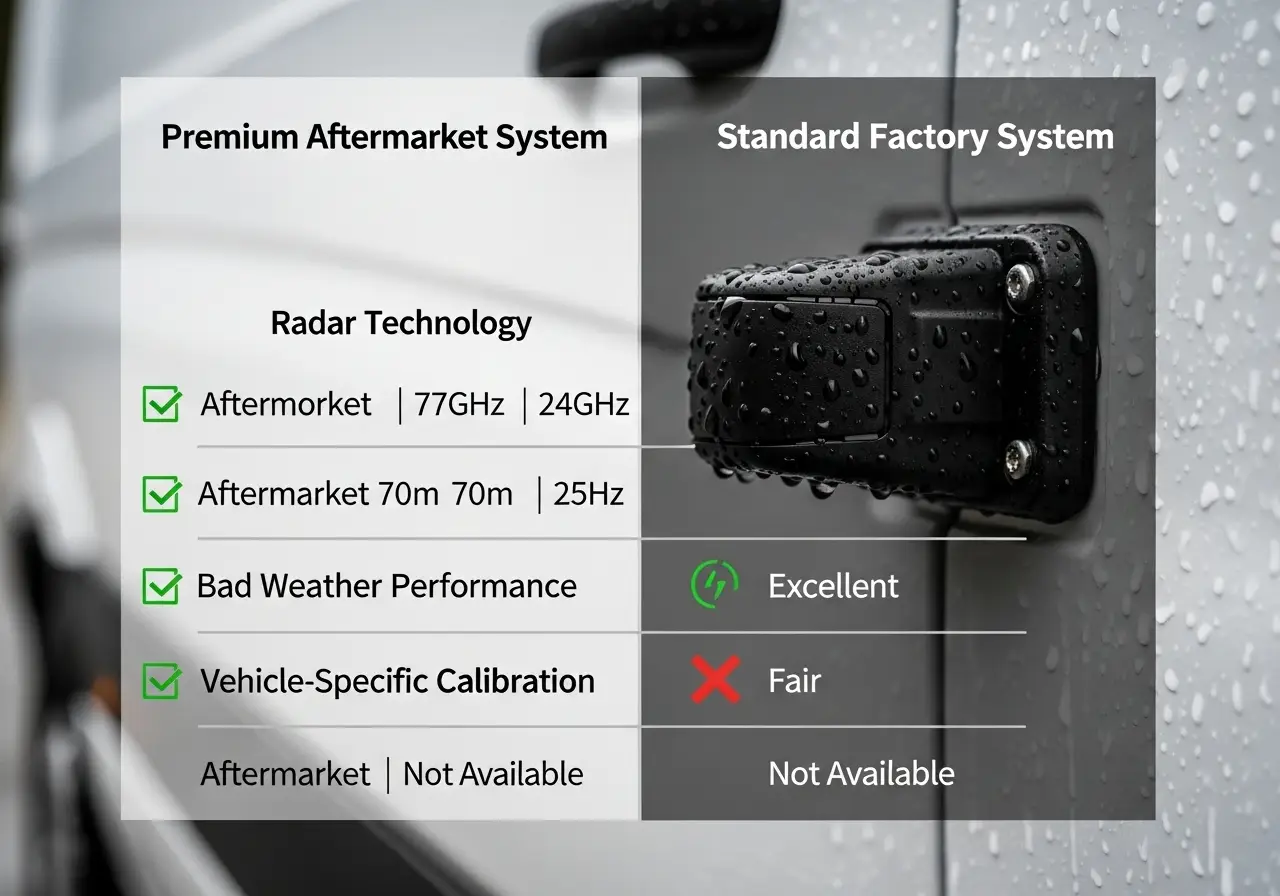
I often talk to customers who are disappointed with the basic blind spot monitor that came with their expensive new vehicle. The reason is simple: a car that was released in 2023 was likely designed and engineered back in 2020, using technology from that era. As a specialized tech company, VST Tech is not tied to these multi-year cycles. We can integrate a brand new, more powerful radar chip into our systems within months of its release. This technology gap is where high-quality aftermarket systems truly shine.
The Development Cycle and Technology Gap
A vehicle manufacturer is juggling the design of thousands of components. A safety technology specialist is focused on perfecting just one. This focused R&D allows aftermarket leaders to innovate faster. While an OEM might use a single radar solution across their entire lineup to save costs, a specialist can offer a range of solutions, perfectly calibrated for everything from a compact SUV to a 40-foot commercial truck. You get technology that is not only newer but also more appropriate for your specific vehicle.
The Myth of "Perfect Integration" vs. True Performance
Factory systems are integrated into the dashboard, which is aesthetically pleasing. But true integration is about performance. A factory system is calibrated once for all vehicles of that model. A professional installer of a high-end aftermarket system6 will calibrate it to your specific vehicle. They can adjust sensor angles and software sensitivity to account for a lift kit on an SUV or a custom utility body on a van. This level of granular calibration, which is crucial for accuracy, is something factory systems simply cannot offer. The result is a system that is not only more advanced but performs more reliably in the real world.
Conclusion
For 2025, the best blind spot system is one built on 77GHz radar, with software intelligence and features specifically engineered for your vehicle's class, whether SUV or commercial van.
-
Explore how 77GHz radar enhances safety with superior object resolution and reliability in all weather conditions. ↩
-
Explore how the Doppler effect allows for precise velocity measurements in blind spot detection. ↩
-
Learn how DOW technology prevents accidents by alerting drivers of approaching traffic when opening doors. ↩
-
Learn how CAN Bus integration enhances data accuracy and reliability in blind spot detection. ↩
-
Understand the need for rugged sensors that can withstand harsh conditions in commercial applications. ↩
-
Discover the advantages of aftermarket systems that can offer superior technology and customization. ↩


